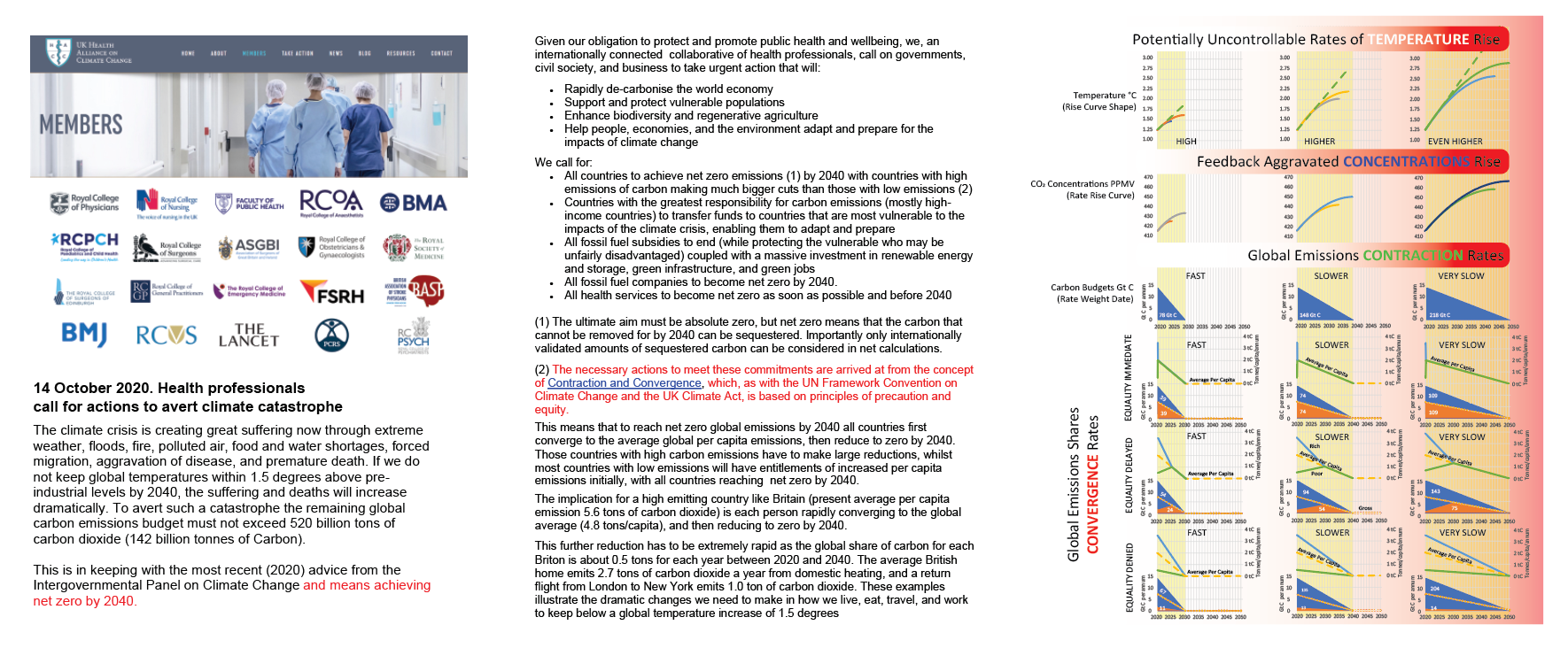John Vidal.
Click logo to return to 'links-page'
John Vidal a good friend & supportive colleague over the last 33 years sadly died recently.
Obituary Friday 20th October 2023 the Guardian
Aubrey,
"No scheme is perfect, but I am convinced that C&C
is the most practical and politically realistic proposal
there is given the extreme urgency of the situation."
John Vidal
Environment Editor
The Guardian
~~~~~~~~~~~~~~~~~~~~~~~
'The whole idea of contraction and convergence came from a violinist.
It's a superb example of how the arts has put a great idea on the international stage.'
John Vidal
Ashden Theatres Trust Conference
In continuing the effort towards perfection,
music has continued as a seminal influence in this whole campaign.
From C&C Campaigns
John Vidal did the lobbying and the spade-work that led to this award

Aubrey Meyer - Guardian Hero 2008
"Can a 60-year-old South African violinist living in a flat in Willsesden, north London, actually change the world? It’s a serious question because the odds are increasing that over the next two years rich and poor countries will come round to Aubrey Meyer's way of thinking if they are to negotiate a half-decent global deal to reduce climate change emissions.
The long years of single-minded lobbying mean that Meyer’s idea now has some powerful backers, including, in Britain, the Royal Commission on Environmental Pollution. 180 MPs have supported it in an Early Day Motion, and the government, equivocal so far, is moving towards a version of it. It has become official policy in India, China and most African countries, Germany and India are expected to run with it in UN meetings. Angela Merkel, the German chancellor, has backed C&C publicly.
Other proposals are emerging and it will take two more years to thrash out a system that will please everyone. But few have the elegance of C&C. “It's the least unfair of all the proposals that have been put forward,” Meyer says. It secures survival by correcting both fatal poverty and fatal climate change in the same arrangement.”
Meyer still plays the violin every day, but seldom with an orchestra. “I just did not realise that it would take quite so long to change the world,” he says.
Guardian June 15th, 1990
The league of cruel numbers. Who should be blamed for the greenhouse effect?
John Vidal on the growing battle of statistics.
THE independent World Resources Institute based in Washington has published a report for the United Nations which sets out what amounts to the first full league table of greenhouse gas emitting nations. It is a significant contribution to the debate about global warming because it is the first time that combined figures for all the three main greenhouse gases haven been compared country by country. Sponsored by the UN Environment and the UN Development programmes the report’s figures (see chart first column) show that greenhouse warming gases are emitted in almost equal parts by the first and third worlds. Adding carbon dioxide, methane and chloro-fluoro-carbon (CFC) emissions, it lists countries by their volume of emissions based on 1987 figures. Here the US and the USSR come in first and -second place. Brazil, China and India follow ahead of Japan, West Germany, the United Kingdom and other developed nations.
Another table, however, has been extrapolated from these figures by environmentalists who argue that the UN figures are biased in favour of the first world because they universalise the blame for greenhouse warming.

Aubrey Meyer, who is lobbying the UN’ for an emergency debate on deforestation, has divided the figures by populations to arrive at a per capita league table. (See table, previous page). This finds China and India for example, dropping into 24th and 25th place and the United States in fourth place behind Canada, Ivory Coast and Brazil. The general affect, he says, move first world countries up the league table. The battle of statistics is politically important because potential solutions to the problem will be argued on the different figures. Poorer countries say that the west has exported pollution with its technology, and it is up to the rich to pay to clean up the mess made by each of its citizens. Mrs. Thatcher and President Bush, however, have already stated that the arguments should not be based on who is responsible or who should pay, which, in turn has been interpreted as meaning that the West favours schemes whereby countries pick up the burden, according to their emissions - whatever their ability to pay solutions to the problem will be argued on the different figures.
Poorer countries say that the west has exported pollution with its technology, and it is up to the rich to pay to clean up the mess made by each of its citizens. Mrs. Thatcher and President Bush, however, have already stated that the arguments should not be based on who is responsible or who should pay, which, in turn has been interpreted as meaning that the West favours schemes whereby countries pick up the burden, according to their emissions - whatever their ability to pay.
Meyer says: “When per capita emissions are compared it shows a First World energy consumer generates on average three tonnes of these emissions per annum compared with a Third World consumer who generates 0.7 tonnes per annum. The UN version is a scurrilous number crunching way of dissociating the issue of culpability. The three tonnes per person in the west compared to 0.7 tonnes in the third world is absolutely fundamental because the bottom line in this crisis is personal responsibility. If per capita GNP for the countries listed is compared (see chart, extreme right) the issue of who should pay for arresting global warming begs the question who is able to afford to cut back on emissions? Clearly the biggest polluters have the biggest GNPs, and lower league countries by comparison have little or no money. If, as the US and others implied recently, reducing greenhouse emissions is too expensive for them to pay for, clearly addressing the assumptions in favour of the continuous economic growth which created this problem in the first place is an urgently necessary exercise.”
A spokesman at the Department of the Environment yesterday said, “At this stage league tables do not help.
There are real anomalies if you look at simple figures. What we are urging people to do is prepare national studies.”
C&C - the Well Tempered Climate Accord
Doing Enough Soon Enough for UNFCCC-Compliance
Carbon Budget Analysis Tool (CBAT)
- C&C has always been about levelling up while slowing down
- UNFCCC-Compliance
- UK Government 2000 -2020
- Sliding Scale
- UNFCCC-Compliance "inevitably requires" C&C UNFCCC Executive
- Massive Support for C&C principle remains completely unrivalled
- 12 UN Bodies support C&C Principle
- Support from High Ranking Eminent Persons (ADB)
- Extensive Political Support from Eminent Persons for C&C principle
- Extensive expert support
- Support for C&C Principle from many Blue Planet Award winners & others
- All UK Political Parties strongly endorsed C&C
- C&C supporting Early Day Motions (EDMs) in the UK Parliament
- C&C becomes the UK Climate Act in 2008
- Unrivalled Support
- Religious consensus supporting C&C principle
- Sustainability Endorsements for C&C
- Publications Endorsements for C&C
- Institutions Endorsement for C&C
- Capitalist Socialist Endorsements for C&C
- Equity Fairness Endorsements for C&C
- Populations and Sustainability Endorsements for C&C
- Academia Endorsement for C&C
- Economics Endorsements for C&C
- + 60 Eminent Economists Call for C&C
- Eminent suporters List
- Transition
- XR & UK government at core differ primarily about the rates of C&C
- Chinese Government advocate C&C before COP-15 2009
- "The C&C principle is unchallenged" Herman Daly
- Huge support for C&C Principle accompanies this submission to UNFCCC 2012
- An ALLIANCE FOR UNFCCC-COMPLIANCE
- Submission to the Talanoa Dialogue 2016
- More eminent persons support (some overlap here)
- The Climate Agenda
- AWARDS
- Submission to Talanoa Dialogue
- C&C and the Rajan Global Carbon Incentive Fund
- The well tempered origin of everything
Global emission zero by 2040 by 2030
Internationally Health Professional are increasingly uniting around this simple full-term strategy for UNFCCC-Compliance.
Editorials have now been published in over 200 Medical Journals worldwide base on this template from the UKCHA.

.png)